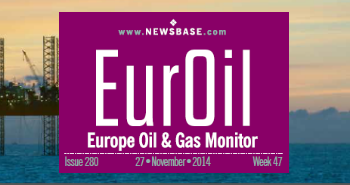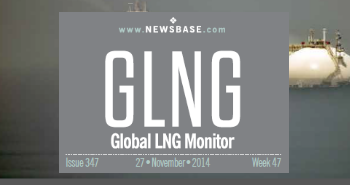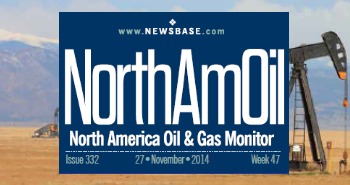Canada weighs building new LNG export terminal on Hudson Bay
A Saltwater port would enable LNG to be shipped from Canada to Europe year-round with the use of Arctic icebreakers.
WHAT: Canada is considering building a saltwater port in northeast Manitoba to export LNG to Europe.
WHY: Amid an escalating trade war with the US, a new saltwater port on Hudson Bay would allow Canada to ship LNG quickly to ports in Rotterdam and Antwerp as Ottawa seeks greater trade ties with Brussels.
WHAT NEXT: The project remains a long way from coming to fruition. European diplomats visited Manitoban officials to open discussions but questions surrounding funding still linger.
Canadian officials are mulling the possibility of building an export terminal on Hudson Bay to enable LNG to be shipped easily year-round to markets in Europe, the country’s national broadcaster CBC reported on April 15.
The idea of a saltwater port in northeastern Manitoba capable of shipping products from Canada’s resource-rich Prairie provinces has been gaining popularity over the past years.
And with US President Donald Trump announcing plans to raise tariffs on Canadian products and redefine the trade relationship with its northern neighbour, support for a deepwater port in the ghost-town of Port Nelson has been turbo-charged.
While Manitoba already has a deepwater port in Churchill, about 280 km northwest of Port Nelson, the facility is a freshwater port, which poses a greater challenge for icebreakers to traverse.
Constructing an export facility in Port Nelson would increase market availability for Prairie products year-round. Currently, the port at Churchill is unable to ship products abroad from November to May due to thick, freshwater ice.
Additionally, the port is hamstrung by the fact that its small natural harbour does not permit container ships to turn around.
In particular, the new port would enable natural gas, bitumen and potash to be exported to partners in Europe and Latin America year-round via the proposed NeeStaNan utility corridor, which would stretch from Leismer in Eastern Alberta to Port Nelson.
A substantial amount of the infrastructure is already in place, which would expedite the project’s timelines and reduce the investment required. For instance, officials with NeeStaNan told BOE Report, that natural gas could be transported via a 1,000-km spur line from TC Energy’s Canadian Mainline, which would take advantage of Manitoba Hydro’s existing right of way.
Another option could be to transport gas through Pembina Pipeline’s Alliance system to Regina. After liquefaction, the natural gas could then be shipped to Port Nelson by rail. A railbed already exists to Port Nelson and would require only around 150 km of new track to be laid to connect to the port’s proposed site.
With Canada and the EU both uncertain about bilateral relations with the US following Trump’s return to the White House, government officials from Ottawa and Brussels have been signalling increased interest in working together and strengthening trade ties.
Indeed, EU Ambassador to Canada Genevieve Tuts along with a team of 18 heads of mission from EU member countries held a meeting with Manitoban Premier Wab Kinew on April 15.
European partners have frequently expressed interest in buying Canadian LNG. Former German Chancellor Olaf Scholz visited Canada in August 2022 hoping to negotiate a deal to buy Canadian LNG.
As well, Latvian Ambassador to Canada Kaspars Ozolins also expressed interest in 2022 of buying Canadian LNG, if the country were to build an export terminal on its east coast.
More recently, Greek Prime Minister Kyriakos Mitsotakis told Canadian broadcaster CTV in a March 2024 sit-down interview that Athens would “absolutely” be interested in buying Canadian supply of the super-chilled fuel.
One month later, also during an interview with CTV, Poland’s Prime Minister Andrzej Duda further echoed calls for Canada to begin shipping LNG to Europe, stating that Poland was ready immediately to begin importing the super-cooled gas to its Świnoujście import terminal.
And while there is a clear market in Europe for Canadian energy exports from the proposed Port Nelson export terminal, Saskatchewan’s potash exports to Brazil would also benefit from a more direct shipping route that also avoids costly fees and delays at the Panama Canal. Canada is the world’s largest producer of potash, responsible for over 30% of global production.
Certainly, a strong case can be made for the proposed port, but a couple of obstacles persist. Concerns have been raised about the viability of adding new LNG export terminals in central and eastern Canada.
Given the lengthy building times of such facilities and Europe’s leading position in the transition to net-zero, questions have emerged whether proposed projects would be completed in time to capitalise on shipping LNG to the European Union before it transitions to clean energy to reach its climate goals.
Additionally, Port Nelson’s isolated location could pose a problem in the case of a spill. The nearest cleanup crews, which are based in Quebec, would need three days to respond to a spill in Hudson Bay.
Moreover, strong tides in the bay would likely have spread the oil to a level where it may not be able to be collected. And there is also the question of what potential disruptive effects a second port on Hudson Bay could have on the endangered polar bear’s habitat.
Certainly, the proposed port is far from a slam dunk. However, tailwinds have emerged in the form of US tariffs and the continued uncertainty on Canada’s trade relations with Washington. With Manitoba’s Premier Kinew suggesting that favourable signs have been relayed that funding for the project could come from the EU or Ottawa, Canadian LNG could finally find its way to Europe.




Follow us online